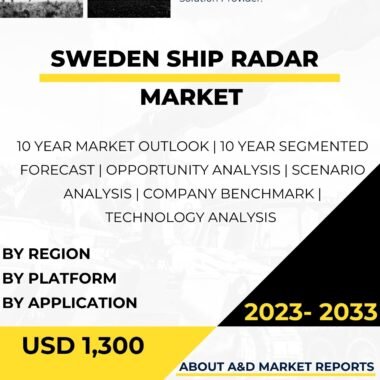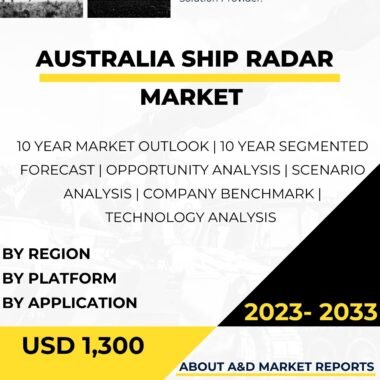Description
The Japan Global Underwater Loitering Reconnaissance System (J-GULRS) represents a remarkable advancement in underwater surveillance technology. Developed by Japan’s leading defense and technology organizations in collaboration with the Japanese Maritime Self-Defense Force (JMSDF), J-GULRS is designed to enhance Japan’s maritime security and provide critical intelligence in the underwater domain.
At its core, J-GULRS is a sophisticated underwater drone system designed to conduct extended missions beneath the sea’s surface. Its primary mission is to gather crucial information, monitor underwater activities, and contribute to the overall maritime situational awareness. The system is equipped with cutting-edge sensors and communication technology, enabling it to operate autonomously for extended periods while transmitting real-time data to naval command centers.
One of the most significant features of J-GULRS is its loitering capability. Unlike traditional underwater vehicles that follow predetermined routes or are tethered to ships, J-GULRS has the ability to “loiter” or remain stationary in a specific area for an extended period. This feature is invaluable for monitoring and surveilling potential threats, such as hostile submarines or suspicious underwater activities. The system’s loitering capabilities enable it to silently observe and collect data without raising suspicion, making it a formidable asset for maritime security.
J-GULRS is not only a passive observer; it is also equipped with the capability to respond to emerging threats. In the event of a security breach or the detection of hostile activities, the system can be reprogrammed remotely to take appropriate action, such as tracking the intruder, recording additional data, or transmitting critical information to the relevant authorities. This responsiveness enhances Japan’s ability to protect its maritime interests and respond swiftly to evolving security challenges.
Another noteworthy aspect of J-GULRS is its global reach. As the name suggests, this system is designed to operate not only in Japan’s territorial waters but also in international waters and potentially in collaboration with partner nations. This global reach underscores Japan’s commitment to ensuring regional and global maritime security and fostering international cooperation in the underwater domain.
In summary, the Japan Global Underwater Loitering Reconnaissance System (J-GULRS) is a game-changing technology that significantly enhances Japan’s maritime surveillance and security capabilities. With its advanced sensors, autonomous operation, loitering capability, and global reach, J-GULRS represents a crucial asset for safeguarding Japan’s interests in the underwater domain and contributing to the broader efforts of maintaining maritime peace and security. Its ability to collect vital information, monitor potential threats, and respond to emerging challenges underscores its importance in an increasingly complex and contested maritime environment.
Table of content
Table Of Contents
1 Market Introduction
1.1 Market Introduction
1.2 Market Definition
1.3 Market Segmentation
1.4 10 Year Market Outlook
2 Market Technologies
3 Global Market Forecast
3.1 Global Market Forecast
3.2 By Size
3.3 By Propulsion
4 APAC Market Trends & Forecast
4.1 Drivers, Restraints And Challenges
4.2 PEST
4.3 Market Forecast
4.3.1 Market Forecast By Size
4.3.2 Market Forecast By Propulsion
4.4 Scenario Analysis
4.5 Key Companies& Profiling
5 Japan Analysis
5.1 Current Levels Of Technology Maturation In This Market
5.2 Market Forecast
5.2.1 Market Forecast By Size
5.2.2 Market Forecast By Propulsion
5.3 Scenario Analysis
5.4 Country Defense Budget (Historical and 10- year forecast)
5.5 Defense Budget Category Spending- 10- year forecast
5.6 Procurement Analysis
5.7 EXIM Data
5.8 Patents
6 Opportunity Matrix
6.1 By Size
6.2 By Propulsion
7 Scenario Analysis
7.1 Scenario 1
7.1.1 By Size (Scenario-1)
7.1.2 By Propulsion(Scenario-1)
7.2 Scenario 2
7.2.1 By Size (Scenario-2)
7.2.2 By Propulsion(Scenario-2)
8 Company Benchmark
9 Strategic Conclusions
10 About Aviation And Defense Market Reports
Segments
By Size
By Propulsion
List of Tables
Table1: Global Market Forecast, Underwater Loitering Reconnaissance System
Table2: APAC Market Forecast, Underwater Loitering Reconnaissance System
Table3: APAC Market Forecast, By Size
Table4: APAC Market Forecast, By Propulsion
Table5: APAC, Scenario Analysis
Table6: Japan Market Forecast, Underwater Loitering Reconnaissance System
Table7: Japan Market Forecast, By Size
Table8: Japan Market Forecast, By Propulsion
Table9: Japan, Scenario Analysis
Table 10: Japan Defense Budget 10 Year Forecast
Table 11: Japan, Defense Budget Category Spending- 10- year forecast
Table 12: Japan, Procurement Analysis
Table 13: Japan, EXIM Data Analysis
Table 14: Japan, Opportunity Analysis, By Size
Table 15: Japan, Opportunity Analysis, By Propulsion
Table 16: Japan, Scenario Analysis, By Size
Table 17: Japan, Scenario Analysis, By Propulsion
Figure 1: Market Segmentation, Japan Underwater Loitering Reconnaissance System
Figure 2: Key Technology Analysis, Underwater Loitering Reconnaissance System
Figure 3: Global Market Forecast, Underwater Loitering Reconnaissance System
Figure 4: APAC, Market Forecast, Underwater Loitering Reconnaissance System
Figure 5: APAC, Market Forecast, By Size
Figure 6: APAC, Market Forecast, By Propulsion
Figure 7: APAC, Scenario Analysis
Figure 8: Japan, Market Forecast, Underwater Loitering Reconnaissance System
Figure 9: Japan, Market Forecast, By Size
Figure 10: Japan, Market Forecast, By Propulsion
Figure 11: Japan, Scenario Analysis
Figure 12: Japan, Defense Budget 10 Year Forecast
Figure 13: Japan, Defense Budget Category Spending- 10- year forecast
Figure 14: Japan, Procurement Analysis
Figure 15: Japan, EXIM Data Analysis
Figure 16: Japan, Opportunity Analysis, By Size
Figure 17: Japan, Opportunity Analysis, By Propulsion
Figure 18: Japan, Scenario Analysis, By Size
Figure 19: Japan, Scenario Analysis, By Propulsion
Figure 20: Company Benchmark




